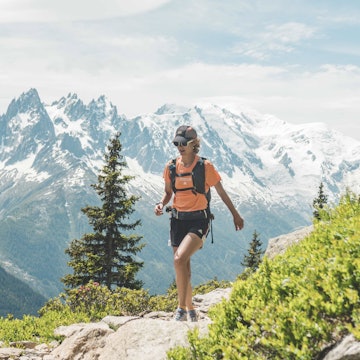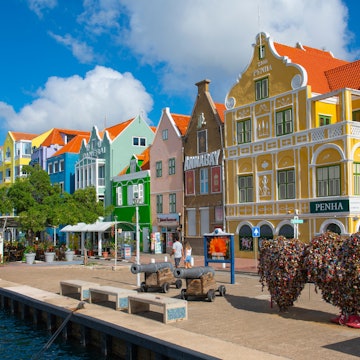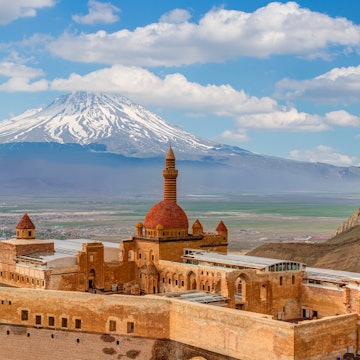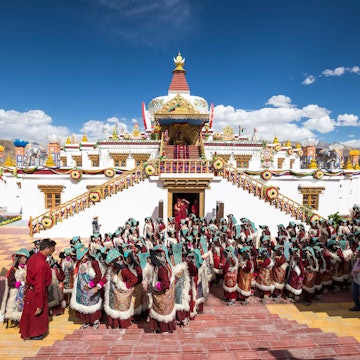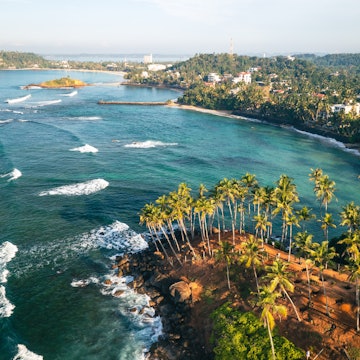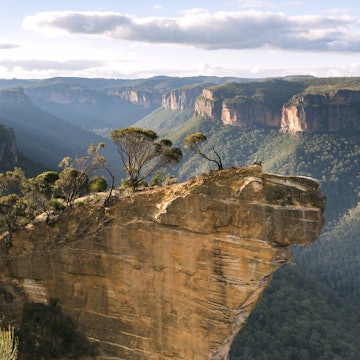
Japan’s Bandai-Asahi National Park offers a world of outdoor adventures
Sponsored by

Sep 8, 2021 • 5 min read

Bandai-Asahi National Park lends itself perfectly to outdoor adventures from hiking, canoeing and cycling to climbing, skiing, and birdwatching © pen kanya / Shutterstock
Straddling the prefectural borders of Yamagata, Niigata and Fukushima in northern Japan is Bandai-Asahi National Park, approximately 187,000 hectares of rumbling volcanoes, stoic mountains, looking-glass lakes and primeval woodland. Such a dramatic setting lends itself perfectly to outdoor adventures from hiking, canoeing and cycling to climbing, skiing, and birdwatching.
Here’s our top recommendations for exploring the wilds of Bandai-Asahi National Park:

Hiking
Hiking has been a popular pastime in Japan for well over a millennium, tracing its origins to the ascetic practitioners of late 6th century. On walking through Bandai-Asahi’s sun-splashed glades and picture-book forests filled with the warbling of nightingales you’ll see why hiking in Japan has maintained its appeal. The Goshikinuma nature trail in Fukushima Prefecture is one of the finest stretches of parkland, meandering past multicolored ponds each with its own distinctive, otherworldly hue: lightning-bolt blue, red copper, milky lime, bottle green, and rich turquoise.
More adventurous trekkers take to the park’s namesake volcano, Mt. Bandai, or the spiritual trails of Dewa Sanzan (the three mountains of Dewa) in Yamagata Prefecture. The latter trifecta of peaks are home to the folk religion of Shugendo – a syncretism that combines Shinto with Taoist, Onmyoudou and esoteric Buddhism underpinnings. The mountains also served as an inspiration for the poet Matsuo Basho’s opus, Oku-no-hosomichi (The Narrow Road to the Deep North). Vermillion torii gates, Shinto shrines, towering pagodas, and miniature jizo statues pepper the cedar-lined trails. And if you’re lucky, you might spot a wandering yamabushi (mountain monk) and convince him to blow his conch-shell horn to ward off evil spirits.

Canoeing/Kayaking
In 1888, Fukushima’s Mt. Bandai erupted violently, changing the nearby landscape. The steam explosion buried large swathes of forest under ponds and lakes and local guides will impress upon you that you’re floating above a lost world. In places, the remnants of once-soaring trees still protrude through the marshes’ surface.
You can explore this geologically nascent waterscape via canoe or kayak with the aid of a knowledgeable local guide from the Mokumoku lodge in Urabandai. Gliding across the waters of Lake Sohara – the only major lake where motorized transport is prohibited – you’ll find croaking frogs and whirring dragonflies, lotus flowers and edible junsai plants (a local specialty renowned for its slippery texture), as well as a panorama of undulating greenery on all sides.
Cycling and Running
Mountain bikes are one of the more adrenaline-packed ways to explore Bandai-Asahi National Park. A popular option is to circumnavigate the glassy waters of Lake Sohara: a cycling route climbs gently into the mountains from where fingers of mist tumble towards the lake below. A longer running and cycling track called ‘Hibaichi’ traces an arc around the largest of the lakes in Urabandai, Lake Hibara. The preternaturally still surface is dotted with islets and harbors, providing a postcard-worthy backdrop to your two-wheeled adventure. The Mokumoku lodge is also a great starting point for renting cycles and deciding your plan of action.
Wildlife
Bandai-Asahi National Park is one of Japan’s top birdwatching and wildlife sanctuaries. It’s home to more than 100 avian species including Japanese nightingales, cuckoos, swifts, herons, eagles, and all manner of chortling birds whose soprano trills ring through the forests. A wide array of winged insects, including damselflies, rainbow-splattered butterflies also call the region home.
Larger mammals, such as macaques, Japanese serows, and Asian black bears (or ‘moon bears’), roam throughout Bandai-Asahi. Hiking with bear bells attached to your pack is a good idea to ward off the latter; walking in groups is also recommended.
Which wildlife you’re likely to encounter is dictated by season, however, so for more info check in with one of the park’s three visitor centers upon your arrival.
Bandai-Asahi is a protected national park and so are the animals who inhabit it. As such, refrain from feeding them – especially the monkeys who often show an interest in human food – and take precautions where necessary to avoid disrupting their natural habitat. Of course, no plants or animals should be removed from the confines of Bandai-Asahi National Park.

Climbing
When winter arrives in northern Japan, so does the heavy snowfall. This changes Bandai-Asahi’s environment from a colorful vista fit for a Grimm Brothers fairy tale to a more monotone, quiet and dreamy landscape. The snow ushers in the winter sports season, which includes snow mountain climbing. Along with guides from the Mokumoku Snow Mountain Climbing School, you can trek powdered mountains and their snow-cloaked forests in the Bandai, Azuma and Adatara regions of the park.
Snowshoe trekking has recently also become popular in Japan. Equipment such as snowshoes are perfect for wading through the deep powder of Bandai-Asahi in winter. Among the popular trails are the Goshikinuma nature trail, which is considerably less crowded in the colder months of the year, and the Mt. Bandai Geo Tour which takes guests to the famous Yellow Falls near the crater of the volcano.
Skiing
The higher altitudes of Bandai-Asahi National Park function as ski slopes in winter. On the Fukushima Prefecture side you’ll find Alts Bandai (one of the largest resorts with excellent forest runs and snowboarding parks), Inawashiro (which has great views of Lake Inawashiro and a range of facilities for children and beginners), and Grandeco Snow Resort on Bandai-san (which is smaller than the others but has good snow quality and facilities).
In Yamagata Prefecture you can ski on the sacred slopes of Gas-san – this resort is more suited to beginners and skiing is available until early summer. Among powder hounds, Japan is also known for its silky-smooth snow, not only for downhill skiing but also cross-country and backcountry skiing. The Kyukamura Urabandai Cross-Country Ski Resort is a great place to try the former, while the entire Urabandai region is popular for the latter. As with other outdoor activities, courses and guides are available from local guide operators such as the Mokumoku lodge.
Author’s note: For on-the-ground guidance in the Urabandai region, check out the Urabandai QR smartphone guide and application. For most activities with the Mokumoku lodge a translator is also recommended.
For more information, visit Bandai-Asahi National Park at the website of the National Parks of Japan
Sponsored by Japan Ministry of the Environment
As a travel entertainment and inspirational media outlet, we sometimes incorporate brand sponsors into our efforts. This activity is clearly labeled across our platforms.
This story was crafted collaboratively between Japan Ministry of the Environment and Lonely Planet. Both parties provided research and curated content to produce this story. We disclose when information isn’t ours.
With sponsored content, both Lonely Planet and our brand partners have specific responsibilities:
-
Brand partner
Determines the concept, provides briefing, research material, and may provide feedback.
-
Lonely Planet
We provide expertise, firsthand insights, and verify with third-party sources when needed.







